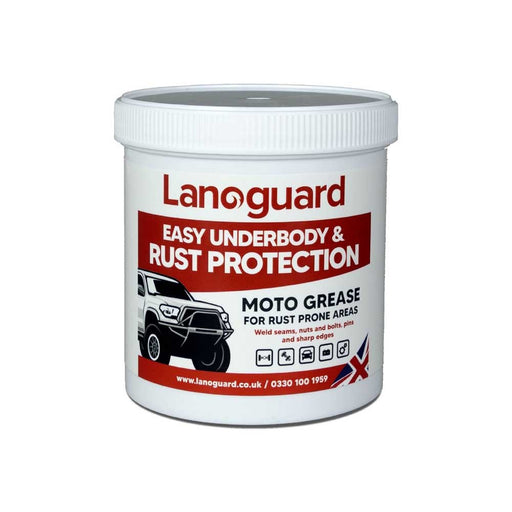Understanding Rust Issues in the Ford KA MK1
The Ford KA MK1 is known for its compact design and agile performance, but it also has a reputation for being prone to rust, particularly in certain areas. Rust can significantly reduce the lifespan of your vehicle if not addressed promptly. This guide will highlight the common rust areas on the Ford KA MK1 and explain how Lanoguard’s products can help you prevent and treat rust effectively.
Common Rust Areas in the Ford KA MK1
- Around the Petrol Filler Cap
One of the most notorious rust spots on the Ford KA MK1 is around the petrol filler cap. This area is prone to rust due to the accumulation of water and fuel residue, which can accelerate corrosion. Regularly inspecting and treating this area can prevent the rust from spreading and causing further damage.
- Rear Springs
The rear springs of the Ford KA MK1 are another vulnerable area. Rust can develop on the springs themselves and the surrounding mounting points, potentially leading to suspension issues. This is particularly problematic in older vehicles or those frequently exposed to wet and salty conditions.
- Front Suspension and Chassis
The front suspension components, including the strut towers and lower arms, as well as the front chassis, are common rust areas in the Ford KA MK1. Rust here can compromise the vehicle’s handling and safety, making it essential to address these areas early.
- Front Chassis
Rust on the front chassis of the Ford KA MK1 can be especially problematic, leading to structural weaknesses that require costly repairs. Regular maintenance and the application of rust prevention products can help keep this critical area in good condition.
How Lanoguard Can Protect Your Ford KA MK1
Lanoguard offers a range of products designed to protect your Ford KA MK1 from rust, extending its lifespan and maintaining its value. Here’s how you can use Lanoguard to safeguard your car:
- Underbody Sealant: Lanoguard’s underbody protection is ideal for preventing rust on the rear springs, front suspension components, and chassis. This sealant forms a durable barrier against moisture, salt, and debris.
- Targeted Application: Focus on applying Lanoguard around the rust-prone areas to prevent corrosion from taking hold.
- DIY Friendly: Lanoguard products are easy to apply at home, even if you’re not a car expert. This makes rust prevention accessible and affordable for all Ford KA MK1 owners.
How to Apply Lanoguard to Your Ford KA MK1
- Surface Preparation: Start by cleaning the areas you want to protect. Remove any dirt, loose rust, or grime to ensure the Lanoguard product adheres properly.
- Application: Shake the Lanoguard product thoroughly, then apply it using a brush or spray. Pay special attention to the rear springs, front suspension, and chassis.
- Curing Time: Allow the product to dry and cure as per the instructions before using the vehicle. This ensures maximum protection.
FAQs
Q: Are Ford KA MK1s known for rusting?
A: Yes, the Ford KA MK1 is known for developing rust, especially in areas like the petrol filler cap, rear springs, and front suspension. Regular rust prevention is crucial to maintaining the vehicle.
Q: How much does it cost to repair rust on the front chassis of a Ford KA MK1?
A: The cost of front chassis rust repairs can vary depending on the extent of the damage. Repairs typically range from £200 to £800, depending on labour and parts required.
Q: Can I prevent rust on my Ford KA MK1 myself?
A: Absolutely! Lanoguard’s products are designed for easy DIY application, allowing you to protect your vehicle without needing professional assistance.
Q: How often should I apply Lanoguard to prevent rust?
A: It’s recommended to reapply Lanoguard annually, especially before winter, to ensure your Ford KA MK1 remains protected year-round.
Q: Do all Ford KA MK1 models rust in the same areas?
A: While rust can occur in various areas, the most common rust spots on the Ford KA MK1 include the petrol filler cap, rear springs, front suspension, and chassis.
Protecting your Ford KA MK1 from rust doesn’t have to be difficult. By understanding the common rust areas and applying Lanoguard’s trusted products, you can keep your car in top shape for years to come. Don’t let rust turn your Ford KA into a rust bucket—take action today!



